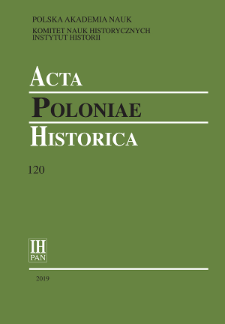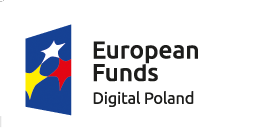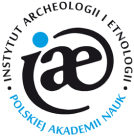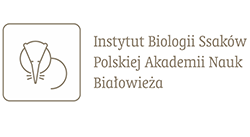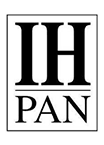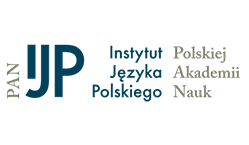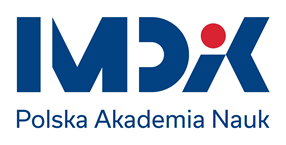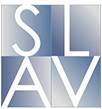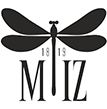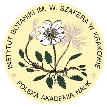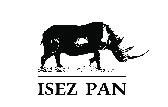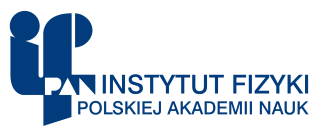- Search in all Repository
- Literature and maps
- Archeology
- Mills database
- Natural sciences
Advanced search
Advanced search
Advanced search
Advanced search
Advanced search

Object
Title: The Enemy and the Victim: Stray Dogs in Poland, 1945–70 (Discourses and Actions)
Inny tytuł:
Acta Poloniae Historica T. 120 (2019), Studies
Współtwórca:
Institute of History of the Polish Academy of Sciences
Wydawca:
Miejsce wydania:
Opis:
Typ obiektu:
Abstrakt:
animal rights - Poland - history ; The article argues that two primary roles were prevalently identified for dogs in the period concerned: for one thing, dogs were perceived as objects of human malevolence or at least dislike; this had to do with the dissemination of disease – particularly, rabies, dangerous to humans. For another, the dog was represented as a victim of cruelty. The exchange of arguments between adherents of different solutions to the ‘canine question’ (dog-pounds and culling vs. shelters) grew emotion-imbued, especially in the late 1950s and early 1960s. The press published voices of protest against mass killings of dogs and reinstatement of dogcatcher’s establishments. Eminent scientists, artists, cultural workers sent requests or appeals in these respects to the authorities. This ‘canine campaign’ led to the adoption, in 1961–2, of legal acts designed to make the methods of dealing with homeless animals ‘civilised’, but they did not bring about a breakthrough in the way dogs were treated or dealt with in post-war Poland. The campaign demonstrated that an active group of dog lovers got formed in the People’s Republic. In this sense, it can be said that dogs became an object of human care (the latter topic not having been subject to the research on which the following text is based).
Bibliografia:
Bakke Monika, ‘Studia nad zwierzętami: od aktywizmu do akademii i z powrotem?’, Teksty Drugie, 3 (2011)
Baratay Éric, Le point de vue animal. Une autre version de l’histoire, Editions du Seuil (Paris, 2012), [Polish version: Zwierzęcy punkt widzenia. Inna wersja historii (Gdańsk, 2014)]
Barcz Anna and Łagodzka Dorota, Zwierzęta i ich ludzie: zmierzch antropocentrycznego paradygmatu (Warszawa, 2015)
Borkowska Ewa, Borkowski Adam, Długołęcka-Pietrzak Maria, and Sobieraj Sebastian (eds.), Kot w literaturze, kulturze, języku i mediach (Siedlce, 2018)
Jarzębowska Gabriela, ‘Retoryka deratyzacji w PRL: od czystki etnicznej i politycznej do czystki gatunkowej’, Teksty Drugie, 2 (2018)
Rothfels Nigel (ed.), Representing Animals (Bloomington and Indianapolis, 2002)
Ryder D. Richard, Animal Revolution. Changing Attitudes toward Speciesism (Oxford, 2000)
Tymieniecka-Suchanek Justyna (ed.), Człowiek w relacji do zwierząt, roślin i maszyn w kulturze, i: Aspekt posthumanistyczny i transhumanistyczny (Katowice, 2014)
Tymieniecka-Suchanek Justyna (ed.), Człowiek w relacji do zwierząt w, roślin i maszyn w kulturze, ii: Od humanizmu do posthumanizmu (Katowice, 2014)
Włodarczyk Justyna and Pręgowski Michał, Pies też człowiek? Relacje ludzi i psów we współczesnej Polsce (Gdańsk, 2014)
Czasopismo/Seria/cykl:
Tom:
Strona pocz.:
Strona końc.:
Szczegółowy typ zasobu:
Format:
Identyfikator zasobu:
oai:rcin.org.pl:116514 ; 0001-6829 ; 2450-8462 ; 10.12775/APH.2019.120.05
Źródło:
IH PAN, sygn. A.295/120 Podr. ; IH PAN, sygn. A.296/120 ; click here to follow the link
Język:
Prawa:
Creative Commons Attribution BY-ND 4.0 license
Zasady wykorzystania:
Copyright-protected material. [CC BY-ND 4.0] May be used within the scope specified in Creative Commons Attribution BY-ND 4.0 license, full text available at: ; -
Digitalizacja:
Institute of History of the Polish Academy of Sciences
Lokalizacja oryginału:
Library of the Institute of History PAS
Dofinansowane ze środków:
Programme Innovative Economy, 2010-2014, Priority Axis 2. R&D infrastructure ; European Union. European Regional Development Fund
Dostęp:
Object collections:
- Repozytorium Cyfrowe Instytutów Naukowych > Kolekcje Partnerów > Instytut Historii PAN > Czasopisma
- Repozytorium Cyfrowe Instytutów Naukowych > Kolekcje Partnerów > Instytut Historii PAN > Wydawnictwa Instytutu
- Repozytorium Cyfrowe Instytutów Naukowych > Kolekcje Partnerów > Instytut Historii PAN > Wydawnictwa Instytutu > Czasopisma
- Repozytorium Cyfrowe Instytutów Naukowych > Kolekcje Partnerów > Instytut Historii PAN > Wydawnictwa Instytutu > Czasopisma > Acta Poloniae Historica
- Repozytorium Cyfrowe Instytutów Naukowych > Piśmiennictwo > Czasopisma/Artykuły
Last modified:
Sep 22, 2023
In our library since:
Mar 9, 2020
Number of object content downloads / hits:
159
All available object's versions:
https://rcin.org.pl./publication/144451
Show description in RDF format:
Show description in RDFa format:
Show description in OAI-PMH format:
| Edition name | Date |
|---|---|
| Jarosz, Dariusz (1959- ), The Enemy and the Victim: Stray Dogs in Poland, 1945–70 (Discourses and Actions) | Sep 22, 2023 |
Objects Similar
Zwierzęta jako przedmiot opresji w Polsce w latach 1945–1970: w poszukiwaniu głównych pól badawczych
Jarosz, Dariusz (1959– )
Machcewicz, Anna
Jarosz, Dariusz (1959– )
Wilk, Marcin

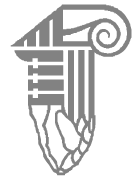 INSTYTUT ARCHEOLOGII I ETNOLOGII POLSKIEJ AKADEMII NAUK
INSTYTUT ARCHEOLOGII I ETNOLOGII POLSKIEJ AKADEMII NAUK
 INSTYTUT BADAŃ LITERACKICH POLSKIEJ AKADEMII NAUK
INSTYTUT BADAŃ LITERACKICH POLSKIEJ AKADEMII NAUK
 INSTYTUT BADAWCZY LEŚNICTWA
INSTYTUT BADAWCZY LEŚNICTWA
 INSTYTUT BIOLOGII DOŚWIADCZALNEJ IM. MARCELEGO NENCKIEGO POLSKIEJ AKADEMII NAUK
INSTYTUT BIOLOGII DOŚWIADCZALNEJ IM. MARCELEGO NENCKIEGO POLSKIEJ AKADEMII NAUK
 INSTYTUT BIOLOGII SSAKÓW POLSKIEJ AKADEMII NAUK
INSTYTUT BIOLOGII SSAKÓW POLSKIEJ AKADEMII NAUK
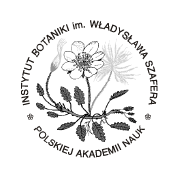 INSTYTUT CHEMII FIZYCZNEJ PAN
INSTYTUT CHEMII FIZYCZNEJ PAN
 INSTYTUT CHEMII ORGANICZNEJ PAN
INSTYTUT CHEMII ORGANICZNEJ PAN
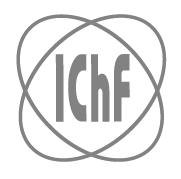 INSTYTUT FILOZOFII I SOCJOLOGII PAN
INSTYTUT FILOZOFII I SOCJOLOGII PAN
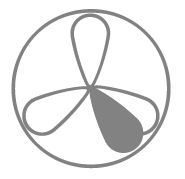 INSTYTUT GEOGRAFII I PRZESTRZENNEGO ZAGOSPODAROWANIA PAN
INSTYTUT GEOGRAFII I PRZESTRZENNEGO ZAGOSPODAROWANIA PAN
 INSTYTUT HISTORII im. TADEUSZA MANTEUFFLA POLSKIEJ AKADEMII NAUK
INSTYTUT HISTORII im. TADEUSZA MANTEUFFLA POLSKIEJ AKADEMII NAUK
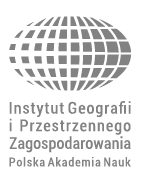 INSTYTUT JĘZYKA POLSKIEGO POLSKIEJ AKADEMII NAUK
INSTYTUT JĘZYKA POLSKIEGO POLSKIEJ AKADEMII NAUK
 INSTYTUT MATEMATYCZNY PAN
INSTYTUT MATEMATYCZNY PAN
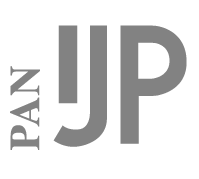 INSTYTUT MEDYCYNY DOŚWIADCZALNEJ I KLINICZNEJ IM.MIROSŁAWA MOSSAKOWSKIEGO POLSKIEJ AKADEMII NAUK
INSTYTUT MEDYCYNY DOŚWIADCZALNEJ I KLINICZNEJ IM.MIROSŁAWA MOSSAKOWSKIEGO POLSKIEJ AKADEMII NAUK
 INSTYTUT PODSTAWOWYCH PROBLEMÓW TECHNIKI PAN
INSTYTUT PODSTAWOWYCH PROBLEMÓW TECHNIKI PAN
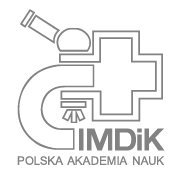 INSTYTUT SLAWISTYKI PAN
INSTYTUT SLAWISTYKI PAN
 SIEĆ BADAWCZA ŁUKASIEWICZ - INSTYTUT TECHNOLOGII MATERIAŁÓW ELEKTRONICZNYCH
SIEĆ BADAWCZA ŁUKASIEWICZ - INSTYTUT TECHNOLOGII MATERIAŁÓW ELEKTRONICZNYCH
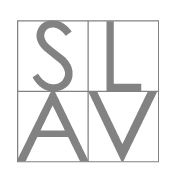 MUZEUM I INSTYTUT ZOOLOGII POLSKIEJ AKADEMII NAUK
MUZEUM I INSTYTUT ZOOLOGII POLSKIEJ AKADEMII NAUK
 INSTYTUT BADAŃ SYSTEMOWYCH PAN
INSTYTUT BADAŃ SYSTEMOWYCH PAN
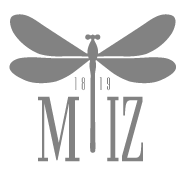 INSTYTUT BOTANIKI IM. WŁADYSŁAWA SZAFERA POLSKIEJ AKADEMII NAUK
INSTYTUT BOTANIKI IM. WŁADYSŁAWA SZAFERA POLSKIEJ AKADEMII NAUK
